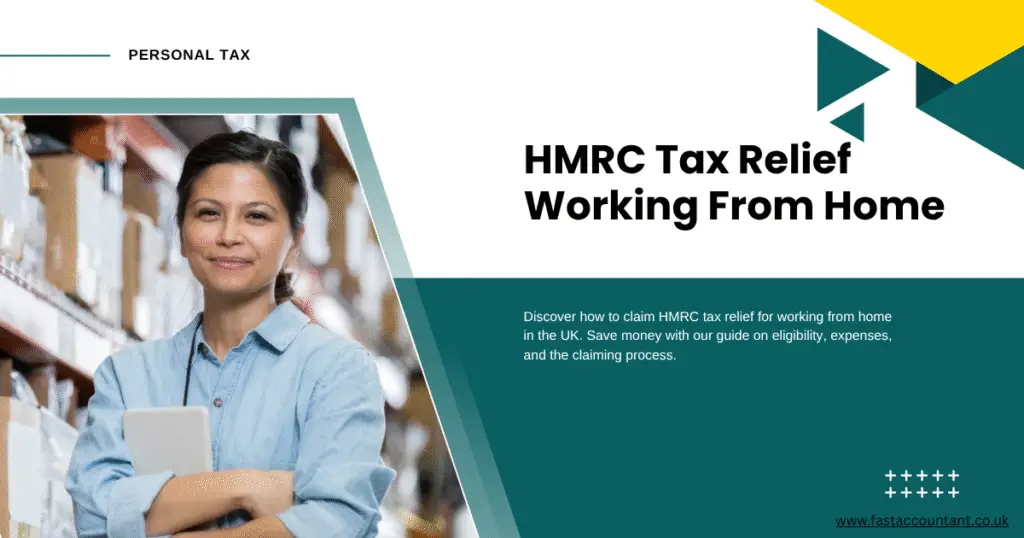
Have you ever wondered if you can claim tax relief for working from home in the UK? Understanding the nuances of HMRC tax relief working from home could save you a significant amount of money. If you’re one of the millions who have transitioned to working remotely, you’re likely curious about any potential tax savings. Let me guide you through the ins and outs of claiming tax relief when your home serves as your office.
Understanding HMRC Tax Relief for Working From Home
Tax relief is a way to reduce the amount of tax you owe, encouraging certain behaviours deemed beneficial, like working remotely. HMRC (Her Majesty’s Revenue and Customs) offers tax relief for those who work from home either permanently or due to circumstances out of their control. Let’s explore this in more detail so you get a clear picture of what to expect.
What is HMRC?
Before diving into tax relief, it’s essential to understand who HMRC is. HMRC is a non-ministerial department of the UK Government responsible for the collection of taxes, the payment of some forms of state support, and the administration of other regulatory regimes. They ensure compliance with tax laws and regulations.
What Qualifies as ‘Working From Home’?
Not everyone can claim tax relief for working from home. To qualify, you must be required to work from home for all or part of the time. This requirement means your employer must explicitly state this as a necessary condition of your employment. If you made the choice to work from home without this requirement, you might not be eligible for this specific tax relief.
How Tax Relief Works for Home Workers
Understanding how tax relief for home workers operates helps you determine whether you can claim and how to proceed. The process involves certain key factors and steps that you should be aware of to ensure you get what you rightfully deserve.
Calculating Tax Relief
Tax relief can be a bit confusing, so let’s make it simpler. You have two main options when it comes to claiming these expenses:
- Flat Rate Deduction: If you don’t want the hassle of providing evidence for your home’s running costs, HMRC allows you to claim a flat rate without needing to keep any records. This rate is currently £6 a week or £26 a month.
- Actual Costs: If you choose to claim the exact costs incurred, you need to provide bills and evidence to show how you’ve calculated the expenses. This can include heating, electricity, internet, and telephone calls necessary for work.
Breakdown of Eligible Expenses
Several expenses can be included when calculating your claim, provided they are exclusively for work:
Utility Bills
You can include a portion of your heating, electricity, and water bills. The percentage you can claim depends on how much you use your home for work purposes.
Internet and Telephone Costs
If you incur extra costs using the internet or phone for work, these might be claimable. Again, only the work-related portion of these bills is eligible for relief.
Equipment and Furniture
Should you purchase specific equipment or furniture solely for your work at home, these can also be factored in. However, only items used exclusively for work, like a desk or office chair, will qualify.
Process Of Claiming Tax Relief
Navigating the process of claiming HMRC tax relief for working from home involves understanding the steps you need to take. Let’s break it down so you can proceed with confidence.
Step-by-Step Guide
Here’s a concise step-by-step guide to help you manage your claim effectively:
Step 1: Determine Eligibility
Verify with your employer if your home working status is a required part of your job. This confirmation is crucial for your eligibility.
Step 2: Choose Your Basis
Decide whether you will claim the flat rate or actual costs. Consider which route will benefit you the most financially and practically.
Step 3: Provide Necessary Documentation
If you opt for actual costs, ensure you keep detailed records and bills. These documents could be audio calls, printed receipts or app records.
Step 4: Apply Online
You can apply either through form P87 online or using your personal tax account. Online applications are generally quicker and more streamlined.
What Happens Next?
Once your application is submitted, HMRC processes the claim and updates your tax code — allowing you to receive your relief usually through an adjusted tax code or direct tax rebate.
FAQs About Working From Home Tax Relief
Let’s address some common questions you might have regarding the procedure, applicability, and benefits surrounding this tax relief.
Can You Claim for All Home Workers?
No, not everyone is eligible. Only those instructed by their employer to work from home specifically qualify for this relief.
Is This a Permanent Solution?
This tax relief can be claimed for any tax year you’re required to work from home. Consequently, if your work situation changes, your eligibility might do so as well.
How Much Can You Save?
The savings depend on your tax bracket and the method you choose to claim. For most people, the flat rate grants a moderate amount, whereas the actual cost method could potentially save you more but requires thorough bookkeeping.
Do I Need to Reapply Each Year?
It’s generally a good practice to reassess and reapply every tax year if you continue to work from home under the eligible conditions. Tax regulations can change, which might affect your claim.
Conclusion
In today’s dynamic working environment, understanding your entitlements for HMRC tax relief when working from home is not only wise but financially rewarding. By following the outlined steps and staying informed about your eligibility, you can benefit from these tax savings with minimal hassle. Whether the flat rate or actual costs benefit you more, ensure your documentation is in order and that you re-evaluate your situation yearly to maximize potential savings. In doing so, you’ll be better equipped to handle the financial aspects of your remote working journey.
